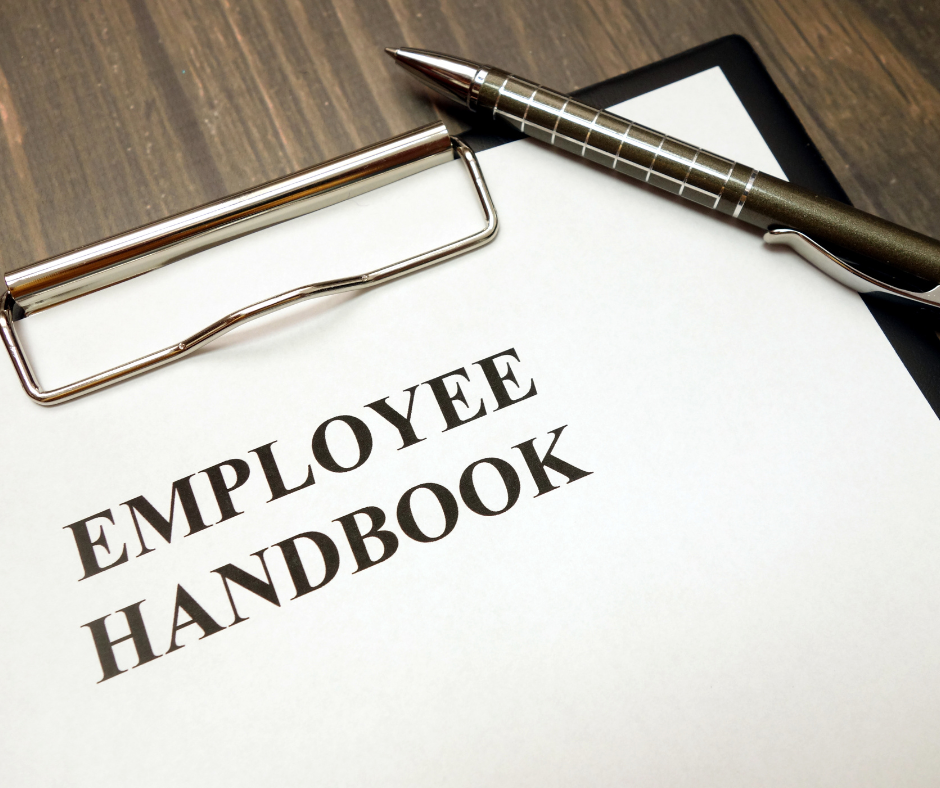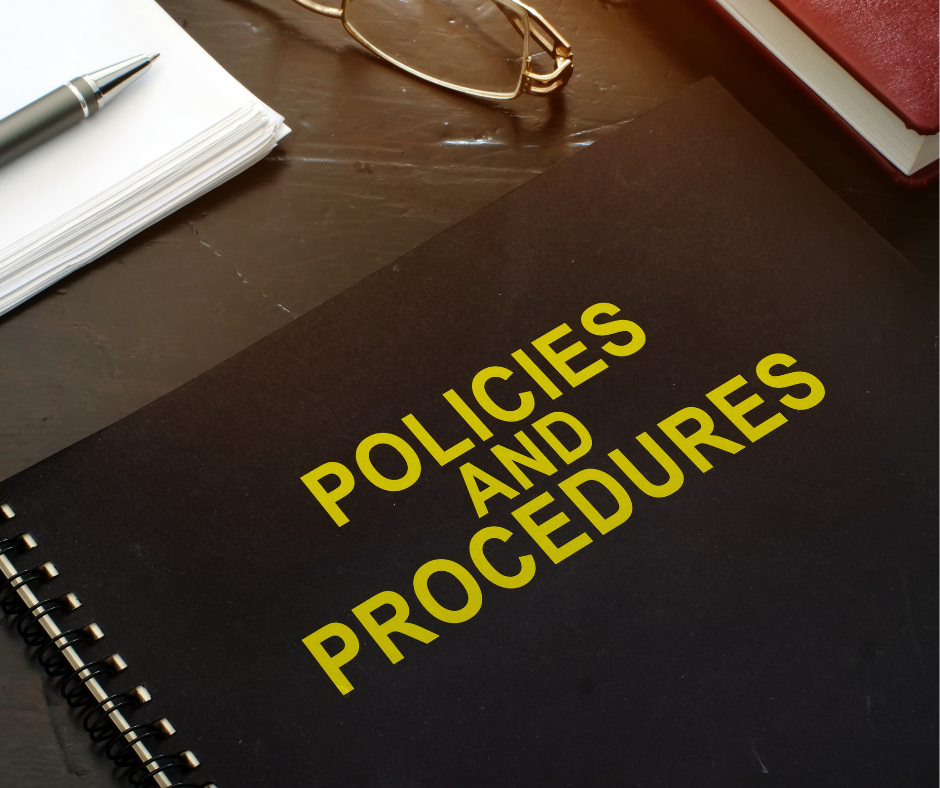
An employee handbook serves as a vital tool for organizations to communicate policies, procedures, and expectations to their employees. In the state of California, where employment laws have certain unique requirements, having a comprehensive and legally compliant employee handbook is crucial. Understanding these legal requirements and ensuring compliance is essential for both employers and employees. This article will explore the importance of employee handbooks in California, key policies and procedures to include, customization for state-specific laws, distribution and acknowledgment methods, as well as the importance of regular updates and revision. By providing a clear and comprehensive guide, an employee handbook can effectively promote a positive and productive work environment while ensuring legal compliance in California.

The Importance of Employee Handbooks in California
Employee handbooks play a crucial role in California workplaces. It’s all about understanding the legal requirements and ensuring compliance with California employment laws. Let’s dive into the significance of employee handbooks in California, including their alignment with the Shoprite employee handbook, and discover how they serve as the backbone for a well-informed and legally compliant workplace.
Understanding the Legal Requirements
To understand the legal requirements of an employee handbook in California, consider the following factors:
1. Employment laws: California has specific employment laws employers must follow. These laws cover minimum wage, overtime, meal and rest breaks, anti-discrimination policies, and family leave. Familiarize yourself with these laws to ensure your employee handbook aligns with the requirements.
2. Updating policies: Laws and regulations can change, so regularly review and update your employee handbook to reflect new legal requirements. Stay informed about changes in labor laws, anti-discrimination laws, and other regulations that may impact your policies. Regular updates maintain legal compliance.
3. Communication and training: Having an employee handbook is not enough; effectively communicate policies to employees and provide training on the handbook’s contents. This ensures employees understand their rights, responsibilities, and the company’s expectations. Training can include seminars, workshops, or online modules.
4. Documenting acknowledgment: It is advisable to obtain acknowledgments from employees confirming they have received, read, and understood the employee handbook. This demonstrates that you fulfilled your legal obligation to inform employees of policies and procedures.
By understanding and incorporating the legal requirements into your employee handbook, you can create a legally compliant and transparent work environment for your employees in California.
Ensuring Compliance with California Employment Laws
– Employers in California must ensure their employee handbooks comply with relevant state employment laws. This includes laws on wage and hour requirements, anti-discrimination policies, family leave, and more.
– Employers need to tailor their employee handbooks to address California’s unique employment laws. This may involve including specific language or policies on topics like meal and rest breaks, overtime pay, and minimum wage.
– Employers must pay attention to California’s wage and hour laws, which provide extra protections for employees. This includes guidelines on calculating and documenting hours worked, providing proper meal and rest breaks, and paying overtime.
– California has its own family leave laws, such as the California Family Rights Act (CFRA), which provide protected leave for certain family and medical situations. Employers should ensure that their employee handbooks outline the procedures and rights related to these laws.
– Employers should regularly review and update their employee handbooks to reflect any changes in California employment laws. This includes staying informed about new legislation and making necessary revisions to policies and procedures.
– Employers must effectively communicate any changes or updates to the employee handbook to employees. This may involve conducting training sessions, providing written notices, or implementing electronic systems for employees to access and review updated policies.

Key Policies and Procedures in an Employee Handbook
In the realm of employee handbooks, one section that holds immense importance is the “Key Policies and Procedures.” Within this section, we’ll uncover a plethora of crucial guidelines that pave the way for a harmonious work environment. From delving into employment classifications and anti-discrimination policies to exploring work hours and overtime regulations, we’ll journey through the various aspects that shape an organization’s culture. Furthermore, we’ll touch upon leave and benefit policies, code of conduct, and workplace expectations, and the significance of confidentiality and protecting intellectual property. Let’s embark on this enlightening exploration together!
Employment Classification and Anti-Discrimination Policies
The employee handbook should include comprehensive employment classification and anti-discrimination policies. These policies serve to promote fairness, prevent discrimination, and foster a positive work environment.
- Employment Classification: It is essential to outline various employment categories (such as full-time, part-time, temporary, or contract) in the handbook. Additionally, the rights, benefits, and expectations for each category should be specified. By doing so, confusion and disputes regarding employment status can be avoided.
- Anti-Discrimination Policies: The handbook must contain policies that strictly prohibit discrimination based on race, color, religion, gender, age, disability, or national origin. These policies should emphasize equal opportunities, fair treatment, and the proper procedures for reporting and addressing discrimination complaints.
- Preventing Harassment: In addition to the anti-discrimination policies, the handbook should provide clear guidelines on preventing and addressing harassment, including sexual harassment. It is crucial to define harassment, provide examples, and outline reporting procedures. By implementing these policies, the organization demonstrates its commitment to maintaining a respectful and inclusive work environment.
- Training and Awareness: The handbook should highlight the importance of training programs to educate employees about employment classification, anti-discrimination policies, and harassment prevention. Regular training ensures that all employees are informed about their rights and responsibilities.
- Enforcement and Consequences: The handbook must clearly state that violations of employment classification and anti-discrimination policies can lead to disciplinary action, including termination. By emphasizing the seriousness of these policies, the organization reinforces its commitment to maintaining a fair and inclusive workplace.
By incorporating comprehensive employment classification and anti-discrimination policies, the employee handbook establishes a framework for a respectful, diverse, and fair work environment. This framework promotes teamwork, productivity, and job satisfaction among employees.
Suggestions: It is important to regularly review and update the employment classification and anti-discrimination policies to align with changing laws, societal norms, and organizational needs. Furthermore, effective communication of policy changes to all employees and providing necessary training for compliance is crucial. Emphasize the significance of promptly reporting concerns or incidents and assure employees of confidentiality and respect.
Work Hours and Overtime Policies
Work hours and overtime policies are crucial elements of an employee handbook. These policies are essential for regulating employee schedules, promoting fairness, and ensuring compliance with labor laws.
- Clearly specify regular work hours: It is important to outline the standard work hours, such as 9:00 AM to 5:00 PM, Monday to Friday, in order to assist employees in planning their workdays effectively.
- Define criteria for overtime: It is necessary to explain the eligibility requirements for overtime, such as surpassing a certain number of hours worked in a day or week. Additionally, clarify the method for calculating overtime rates.
- Require supervisor approval: State that employees must obtain approval from their supervisors before working overtime. This measure aims to ensure proper management of workloads and prevent unauthorized overtime.
- Mandate accurate timekeeping: Emphasize the importance of accurate timekeeping, whether it’s through clocking in and out or maintaining a record of time worked on a timesheet. This practice facilitates accurate hour tracking for payroll purposes.
- Address meal and rest breaks: Provide guidelines regarding meal and rest breaks based on state labor laws. For instance, in California, employees are entitled to a 30-minute meal break for every 5 hours worked.
- Outline flexible work arrangements: If applicable, include policies regarding flexible work schedules or remote work options. Be sure to specify any requirements or restrictions associated with these arrangements.
When developing work hours and overtime policies, it is crucial to consider the specific labor laws and regulations in your state, particularly in California. Consulting legal resources or seeking professional advice can help ensure compliance.
By implementing clear and comprehensive work hours and overtime policies, employers can promote fair and efficient scheduling practices, enhance employee satisfaction, and maintain compliance with labor laws.
Leave and Benefit Policies
Leave and benefit policies are critical components of employee handbooks in California. These policies set out the guidelines and regulations governing time off and employee entitlements. When developing these policies, it is essential to consider the following factors:
1. Types of leave: Clearly specify the various types of leave, including sick leave, vacation leave, parental leave, and bereavement leave.
2. Accrual and usage: Provide clarification on how leave is earned and outline the guidelines for requesting and utilizing it. Be sure to mention the maximum amount of leave that can be taken at once and any limits on carryover.
3. Eligibility: Clearly define the criteria for leave eligibility and determine the specific benefits offered to eligible employees.
4. Paid and unpaid leave: Clearly state which types of leave are paid and which are unpaid, keeping in mind legal obligations like California’s paid sick leave law.
5. Benefit programs: Provide detailed information on health insurance, retirement plans, and employee assistance programs. Include eligibility requirements, enrollment periods, and details on employee contributions.
6. Leave policies for protected categories: Ensure that your policies comply with both California and federal laws, especially those pertaining to protected categories such as pregnancy disability leave and family and medical leave.
Furthermore, it is crucial to regularly review and update your leave and benefit policies to stay in line with any changes in laws and regulations. Additionally, communicate and train your employees on any policy changes to ensure understanding and compliance.
Code of Conduct and Workplace Expectations
Creating a Code of Conduct and Workplace Expectations in an employee handbook is essential. It establishes clear guidelines to promote a positive work environment and ensure harmonious relationships among employees.
Consider the following key points:
1. Specify expected behavior: Clearly outline the conduct expected from all employees, emphasizing respect, professionalism, and teamwork. This fosters a positive and inclusive workplace culture.
2. Promote diversity and inclusion: Emphasize the value of diversity and commit to creating an inclusive environment where everyone is treated with fairness and respect, regardless of background or characteristics.
3. Address harassment and discrimination: State that any form of harassment, including sexual harassment, racial discrimination, or any other discriminatory behavior, is not tolerated. Provide a mechanism for reporting and addressing incidents.
4. Outline ethical standards: Establish guidelines for ethical behavior and integrity, including rules for conflicts of interest, compliance with laws and regulations, protection of company assets, and confidentiality.
5. Set expectations for attendance and punctuality: Clearly communicate expectations for attendance, tardiness, and adherence to work schedules. Include policies for requesting time off or leave.
6. Address use of company resources: Ensure employees understand the appropriate use of company resources, such as technology, internet access, and email communication. Stress the importance of respecting privacy and confidentiality.
7. Establish dress code guidelines: If applicable, outline the dress code policy to maintain professionalism and align with company values.
8. Reinforce consequences: Clearly state the consequences of violating the Code of Conduct, such as disciplinary actions and potential termination. Make it clear that adherence to these expectations is a condition of employment.
Fact: Research shows that organizations with strong codes of conduct and workplace expectations experience higher employee satisfaction, improved teamwork, and lower turnover rates.
Confidentiality and Intellectual Property Policies
Confidentiality and intellectual property policies play a crucial role in an employee handbook as they serve to safeguard sensitive information and protect an organization’s valuable intellectual property. These policies serve the purpose of clearly defining what constitutes confidential information and also outline the expectations for its handling. By doing so, they emphasize the importance of preserving and safeguarding intellectual property and provide employees with clear guidelines on how to utilize company resources.
In order to ensure compliance with these policies, confidentiality and non-disclosure agreements are put into effect. Furthermore, employees are educated about the significance of maintaining confidentiality, provided with training to help them identify and report any breaches, and the policies themselves undergo regular review and updating. Violations of these policies are met with disciplinary actions, reinforcing the importance of adhering to them.
By implementing comprehensive policies, organizations can effectively protect their valuable assets and maintain a competitive advantage. These efforts contribute to establishing some of the best company handbooks, ensuring the security of sensitive information and fostering a culture of responsible information handling.

Customizing an Employee Handbook for California
When it comes to creating an employee handbook specifically for California, customization is key. We’ll dive into the various aspects of tailoring your handbook to comply with state-specific employment laws, navigating the intricacies of California wage and hour regulations, and ensuring your policies align with California’s family leave laws. So buckle up, because we’re about to break it down for you and help you create a handbook that’s tailored just right for your California workforce.
Incorporating State-Specific Employment Laws
Incorporating State-Specific Employment Laws
When customizing an employee handbook for California, it is important to include state-specific employment laws. This ensures compliance and protects both employees and employers. Here are some key considerations:
- Minimum wage: California has its own minimum wage requirements, which may be higher than the federal minimum wage. Employers must ensure that their employee handbook reflects the current minimum wage rate in California.
- Meal and rest breaks: California has specific rules for meal and rest breaks based on hours worked. Employee handbooks should include these rules.
- Anti-discrimination and harassment laws: California has strong laws protecting employees from discrimination and harassment. Employee handbooks should have comprehensive policies that comply with these laws.
- Family and medical leave: California provides additional protections and benefits for family and medical leave. Companies should incorporate these state-specific laws into their employee handbook.
- Leave of absence: California has laws governing employee leaves of absence, such as the California Family Rights Act and the Pregnancy Disability Leave Law. Employers need to understand and integrate these laws into their policies and procedures.
- Workers’ compensation: California has its own workers’ compensation laws that require employers to provide coverage for work-related injuries and illnesses. Employee handbooks should include information on reporting procedures and rights related to workers’ compensation.
- Employment classification: California has strict guidelines for determining employee classification. These guidelines should be clearly outlined in the employee handbook.
By incorporating state-specific employment laws into the employee handbook, companies can ensure legal compliance, transparency, and a fair and safe working environment.
Addressing California Wage and Hour Laws
Addressing California Wage and Hour Laws is crucial for customizing an Employee Handbook in the state. Understanding and complying with these laws protects both employers and employees. Here are some essential points to consider:
1. Classifying employees correctly: Employers must determine if employees are exempt or non-exempt based on California wage and hour laws. This classification determines eligibility for overtime pay and wage and hour requirements.
2. Overtime policies: California laws mandate overtime pay for eligible non-exempt employees who work beyond 8 hours in a day or 40 hours in a week, as well as the first 8 hours on the seventh consecutive day. Employers need to outline these policies and ensure compliance.
3. Meal and rest breaks: California law requires employers to provide meal and rest breaks. Non-exempt employees receive a 30-minute meal break if they work more than 5 hours, and a second 30-minute meal break if they work more than 10 hours. Rest breaks of at least 10 minutes for every 4 hours worked are also required. These requirements should be clearly stated in the handbook.
4. Payroll practices: Employers must adhere to specific payroll practices mandated by California wage and hour laws. This includes accurate record-keeping, proper calculation and payment of wages, and timely payment of final wages upon termination.
5. Compliance with minimum wage laws: California has its own minimum wage laws that may exceed the federal minimum wage. Employers must ensure they pay employees at least the minimum wage set by the state and local ordinances.
Addressing California Wage and Hour Laws in the Employee Handbook is critical for promoting a fair and compliant work environment. Employers should consult legal counsel or resources such as the California Division of Labor Standards Enforcement for complete and up-to-date information on these laws.
Adapting to California Family Leave Laws
Adapting to California Family Leave Laws is crucial for employers to ensure compliance and maintain a productive work environment. In order to adhere to these laws, employers must include detailed information about the California Family Rights Act (CFRA) and the Paid Family Leave (PFL) program in their employee handbook. This comprehensive information should cover eligibility criteria, leave duration, and the process for requesting and taking family leave.
Furthermore, employers need to emphasize the importance of job protection during leave. It is necessary to clearly state employees’ rights to return to their positions after leave ends and the consequences of violating these rights.
In addition, outlining the procedures for requesting and scheduling family leave is essential. This includes providing advanced notice, required documentation, and any limitations on the timing or duration of the leave.
Employees may need to take family leave intermittently for medical appointments or emergencies. Employers should address this by including policies for requesting and approving intermittent leave, in order to accommodate employees’ needs.
It is also important for employers to communicate the impact of family leave on benefits, compensation, and any requirements for using accrued vacation or paid time off during the leave period.
By incorporating comprehensive information and clear policies in the employee handbook, employers can support their employees’ work-life balance and ensure a fair process for requesting and taking family leave while adhering to California Family Leave Laws.

Employee Handbook Distribution and Acknowledgment
When it comes to the employee handbook in California, the distribution and acknowledgment process play a crucial role. In this section, we’ll uncover how organizations communicate their policies effectively to employees, ensuring transparency and understanding. We’ll also dive into the process of obtaining employee signatures and acknowledgment, highlighting the significance of this step in ensuring compliance and accountability. Get ready to explore the essential aspects of employee handbook distribution and acknowledgment in California. Let’s jump in!
Communicating the Policies to Employees
Communicating the Policies to Employees
When communicating policies to employees, clarity, understanding, and compliance are important. Here are some effective methods:
- Hold an orientation session for new employees to thoroughly explain and discuss policies.
- Create a comprehensive employee handbook that clearly outlines all policies and procedures. This handbook should be easily accessible to all employees.
- Conduct regular training sessions to review and reinforce policies. Sessions can be conducted in person or through online modules.
- Use visual aids such as posters or infographics to highlight key policies and make them memorable.
- Establish an open-door policy where employees can ask questions or seek clarification on policies from their supervisors or HR representatives.
- Utilize email newsletters or company-wide announcements to communicate any policy updates or changes.
- Encourage two-way communication by providing an avenue for employees to provide feedback or suggestions regarding policies.
By implementing these strategies, employers can effectively communicate policies, promote compliance, and maintain a positive and productive work environment.
Obtaining Employee Signatures and Acknowledgment
Obtaining employee signatures and acknowledgment is crucial when implementing an employee handbook. Here are the steps to follow:
- Provide each employee with a copy of the handbook.
- Clearly explain the purpose and importance of the handbook.
- Allow sufficient time for employees to review the handbook.
- Ask employees to sign an acknowledgment form confirming their receipt, reading, and understanding of the handbook.
- Keep a record of the signed acknowledgment forms for future reference.
Obtaining employee signatures and acknowledgment ensures that employees are informed about the policies and procedures outlined in the handbook. This protects both the employer and the employee by establishing clear expectations and responsibilities. By acknowledging the handbook, employees commit to adhering to the company’s policies.
Fact: According to a survey by the Society for Human Resource Management, 98% of organizations use employee handbooks, illustrating the widespread recognition of their importance in establishing clear guidelines for employees.
Updating and Revising an Employee Handbook
Regularly updating and revising an employee handbook is crucial for maintaining a smooth and compliant workplace. In this section, we’ll explore the importance of conducting regular reviews and updates to ensure that your handbook, aligned with the applebees employee handbook, reflects the latest laws, regulations, and company policies. Additionally, we’ll discuss the significance of effective communication and comprehensive training to keep your employees informed about any changes in policies and procedures. Stay ahead of the curve and create a strong foundation for your organization with an up-to-date employee handbook.
Importance of Regular Review and Updates
- Ensuring compliance: Regularly reviewing and updating an employee handbook is of utmost importance for compliance with current employment laws and regulations. This is crucial to help the company stay compliant and avoid any potential legal issues.
- Reflecting organizational changes: As a company undergoes changes, such as the implementation of new policies, procedures, or restructuring, regularly reviewing and updating the employee handbook becomes essential to ensure that employees are equipped with the most up-to-date information.
- Addressing emerging issues: Given the constantly evolving business environment, it is vital to review and update the employee handbook regularly in order to address any emerging issues. This ensures that employees are well-informed and prepared.
- Improving clarity and understanding: Regular review enables the identification of any areas in the employee handbook that may be unclear or confusing to employees. Through necessary updates, policies and procedures can be enhanced for better clarity and understanding, thereby minimizing misunderstandings and potential conflicts.
- Enhancing employee engagement: Employees are more likely to engage with and adhere to the policies and procedures outlined in the employee handbook if they perceive it as relevant and up-to-date. Regular review and updates serve as a demonstration of the company’s commitment to maintaining a positive work environment and keeping employees well-informed.
Communication and Training on Policy Changes
Effective communication and training are crucial for informing and ensuring compliance among employees regarding policy changes. To effectively communicate these changes, it is important to use clear and concise language when notifying employees. This can be done through options such as sending a company-wide email or holding a staff meeting. Transparency plays a key role in helping employees understand the reasons behind the changes and any impact on their roles or responsibilities.
Conducting training sessions led by HR professionals or department managers who have a complete understanding of the changes is essential. Make these sessions interactive and encourage employees to ask questions and seek clarifications. Practical examples and real-life scenarios should be used to help employees grasp how the policy changes apply to their day-to-day work.
To further reinforce policy compliance, implementing ongoing communication and reminders is necessary. This can be achieved through periodic emails, notices in common areas, or using an accessible intranet system. Keeping open lines of communication is important to address any concerns or questions that may arise after the initial communication and training sessions.
In order to assess employees’ comprehension of the policy changes, quizzes or assessments should be utilized. Providing feedback is vital to address any confusion or misunderstandings.
By prioritizing effective communication and comprehensive training, organizations can ensure that employees are aware of and understand policy changes, ultimately fostering accountability and compliance in the workplace.
Frequently Asked Questions
FAQs about California Employee Handbooks
1. What are mandatory policies that must be included in a California employee handbook?
Mandatory policies that must be included in a California employee handbook include harassment, discrimination, and retaliation prevention policies. These policies are necessary to comply with state and federal laws and protect employees’ rights.
2. What are optional policies that can be included in a California employee handbook?
Optional policies that can be included in a California employee handbook are those that provide structure and set expectations for the workforce. These may include social media policies, drug use policies, privacy rules, and policies related to outside employment.
3. Can an employer change the policies in their employee handbook?
Yes, California employers have the right to change or terminate policies in their employee handbooks. However, certain guidelines must be followed to ensure compliance with state and federal laws.
4. What is the purpose of having a discrimination and retaliation prevention policy in an employee handbook?
The purpose of having a discrimination and retaliation prevention policy in an employee handbook is to promotes equal employment opportunity and protect employees against unlawful discrimination. It helps establish expectations for behavior and provides an employer defense against related legal claims.
5. What resources are available for creating a California employee handbook?
Practical Guidance offers templates and resources for creating a California employee handbook. The California Chamber of Commerce provides an online tool called the Employee Handbook Creator, which guides employers through the process and helps customize the handbook according to their specific needs.
6. Is it necessary to have a Spanish version of the employee handbook?
While there is no legal requirement to have a Spanish version of the employee handbook, it may be beneficial for employers with Spanish-speaking employees. Providing a Spanish version can ensure clear communication of policies and contribute to a more inclusive workplace.